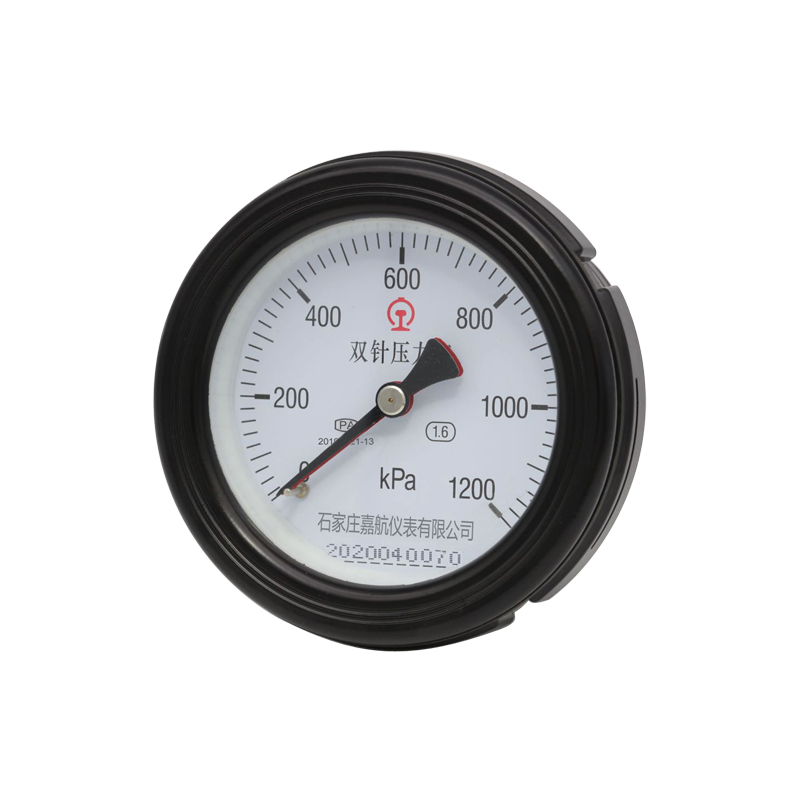
Oct . 22, 2024 06:14 Back to list
Diaphragm-Based Pressure Gauge for Accurate Measurement and Monitoring Solutions
Understanding Diaphragm Pressure Gauges A Comprehensive Overview
Pressure measurement is a fundamental aspect of various industrial processes, ensuring safety, efficiency, and optimal functioning of systems. Among the numerous types of pressure gauges, diaphragm pressure gauges stand out for their reliability and versatility. These devices are commonly employed in applications where precise pressure measurement and control are critical. In this article, we will delve into the workings, advantages, and applications of diaphragm pressure gauges, specifically focusing on models like the JAH series.
What is a Diaphragm Pressure Gauge?
A diaphragm pressure gauge utilizes a flexible membrane, or diaphragm, as its main sensing element. When pressure is applied, the diaphragm deflects in response to the change in pressure. This movement is translated into a mechanical indication, typically displayed on a dial. The diaphragm is usually made of metals such as stainless steel, which provides durability and corrosion resistance, making it ideal for various environments.
How Diaphragm Pressure Gauges Work
The fundamental operation of a diaphragm pressure gauge involves measuring the deflection of the diaphragm in response to pressure. When pressure is applied to the gauge, the diaphragm moves from its neutral position. This movement is linked to a mechanism, often comprising a gear system, which translates the deflection into a corresponding reading on the gauge dial.
For differential pressure applications, a diaphragm gauge can measure the difference between two pressures. This is particularly useful in processes where monitoring the variations in pressure is critical, such as in filtration systems, where the build-up of pressure can indicate when a filter requires maintenance.
Advantages of Diaphragm Pressure Gauges
1. Accuracy and Sensitivity Diaphragm gauges offer high accuracy and sensitivity, making them suitable for precise measurements. Their ability to detect small changes in pressure makes them invaluable in laboratories and industrial settings.
2. Durability Many diaphragm gauges are constructed from corrosion-resistant materials like stainless steel or special alloys. This allows them to withstand harsh environments, including those with aggressive chemicals or extreme temperatures.
3. Variety of Configurations Diaphragm pressure gauges come in various sizes and configurations, making them flexible for different applications. Whether for low or high pressure, there is likely a diaphragm gauge that fits the specific requirements.
pressure gauge with diaphragm jah

4. Minimal Maintenance Due to their robust design, diaphragm gauges typically require minimal maintenance. This saves time and reduces operational costs over the lifespan of the equipment.
5. Compact Design The compact nature of these gauges allows for easy integration into existing systems without requiring significant modifications.
Applications of Diaphragm Pressure Gauges
Diaphragm pressure gauges are utilized in a wide array of industries due to their adaptability. Some notable applications include
- Food and Beverage Industry In systems where cleanliness and hygiene are paramount, diaphragm gauges can monitor the pressure in processing systems without contaminating the product.
- Oil and Gas Diaphragm gauges can handle the high pressures found in oil and gas applications, providing reliable readings that are essential for safety.
- Chemical Processing Their resistance to corrosive substances makes diaphragm pressure gauges ideal for chemical manufacturing processes.
- Pharmaceuticals In the pharmaceutical industry, maintaining precise pressure control is crucial for product quality and compliance with regulations. Diaphragm gauges are employed in various stages of production to ensure consistency.
Conclusion
Diaphragm pressure gauges, including models like the JAH series, are indispensable in modern industry for their accuracy, durability, and versatility. Their ability to reliably measure pressure across various applications makes them a preferred choice for engineers and technicians who prioritize precision in their operations. As industries continue to evolve and embrace more sophisticated technologies, diaphragm gauges will undoubtedly remain a critical component of pressure measurement solutions.
-
High-Precision 5 Valve Manifold Differential Pressure Gauge Suppliers
NewsApr.29,2025
-
High-Precision Diaphragm Vacuum Pressure Gauges Manufacturers & Quotes
NewsApr.29,2025
-
Omega Differential Pressure Gauges High Accuracy & Durability
NewsApr.28,2025
-
Low Pressure Differential Pressure Gauges Precision Solutions & Quotes
NewsApr.28,2025
-
Digital Diaphragm Pressure Gaauge Precision Measurement & OEM Quotes
NewsApr.28,2025
-
Differential Pressure Gauge China Price High-Accuracy & Best Quotes
NewsApr.28,2025
